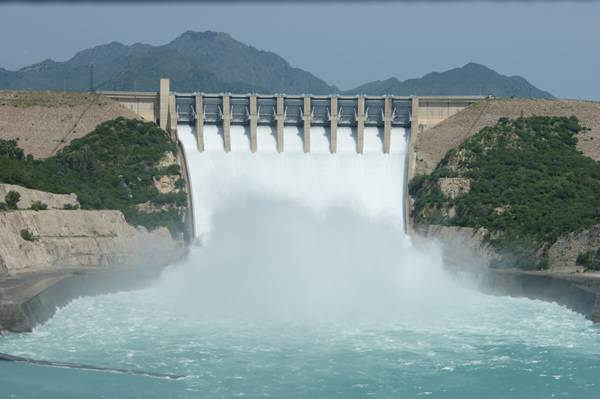There are two snippets of good news for a beleaguered people. Firstly, three hydel power stations operated by Wapda have delivered 110.190 million units of electricity to the national grid compared to 64.037 million units generated the same day last year, an increase of 46.153 million units. The second is that we are doing well with regards to developments in water and sanitation (and for some, just doing better than India is good enough news). Though unrelated, both these water stories have lessons for policy.
The basic purpose of dams is to provide water for agriculture as required by the provinces and hydel electricity generation is merely a by-product. However, it is more efficient and less costly than thermal power that relies on furnace oil and LNG import. This increase in power generation is the result of increased water releases from the dams by the Indus River System Authority. This should signal policy makers that hydel power is the way to go, and we are too far behind in building dams. The hydel power generation capacity of Wapda stands at about 7,000MW – about one-third of the total installed capacity in the country. We have the potential already, the choice is between agriculture and electricity provision. More dams will eventually let us dedicate water resources to both. The per unit generation cost of hydel electricity is merely Rs2.62 on an average as compared to Rs7.43 for gas, Rs12.91 for coal, and Rs17.58 for furnace oil. With these facts, how did governments, former and current, not make hydel power a priority?
The Water, Sanitation, and Hygiene (WASH) Performance Index is a comparison of country performance in water access, water equity, sanitation access, and sanitation equity. Among the world’s most populated countries, Pakistan, China, and Nigeria were top performers, ranked 5, 11, and 18 respectively. Russia, the Philippines and India were bottom performers and ranked 72, 83, and 92 respectively. Despite the assumption that countries with higher GDP will perform better in improving access to water and sanitation, GDP was not significantly correlated with performance. This means that the issue of better sanitation is a matter of will rather than of scarcity of resources. The present government is making efforts to improve the situation of water and sanitation coverage. However, more awareness and better facilities are in order. 180 million people in Pakistan are still without adequate clean drinking water and safe sanitation facilities.
Tuesday, April 16, 2024
Water Stories

High-level Saudi delegation in Islamabad to hold meetings with Pakistani leadership
2:07 PM | April 16, 2024
Decision to retaliate against Iran attacks rests with Israel, says Pentagon
1:05 PM | April 16, 2024
Elon Musk proposes small fee for new X users to combat fake accounts
1:01 PM | April 16, 2024
Samsung overtakes Apple as top smartphone maker: Report
12:57 PM | April 16, 2024
Pakistan, IMF discussing new multi-billion-dollar program, says Finance Minister Aurangzeb
11:09 AM | April 16, 2024
Political Reconciliation
April 16, 2024
Pricing Pressures
April 16, 2024
Western Hypocrisy
April 16, 2024
Policing Reforms
April 15, 2024
Storm Safety
April 15, 2024
Democratic harmony
April 16, 2024
Digital dilemma
April 16, 2024
Classroom crisis
April 16, 2024
Bridging gaps
April 16, 2024
Suicide awareness
April 15, 2024
ePaper - Nawaiwaqt
Advertisement
Nawaiwaqt Group | Copyright © 2024





